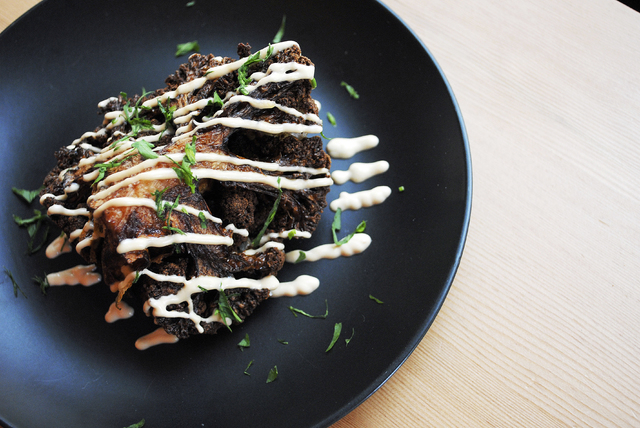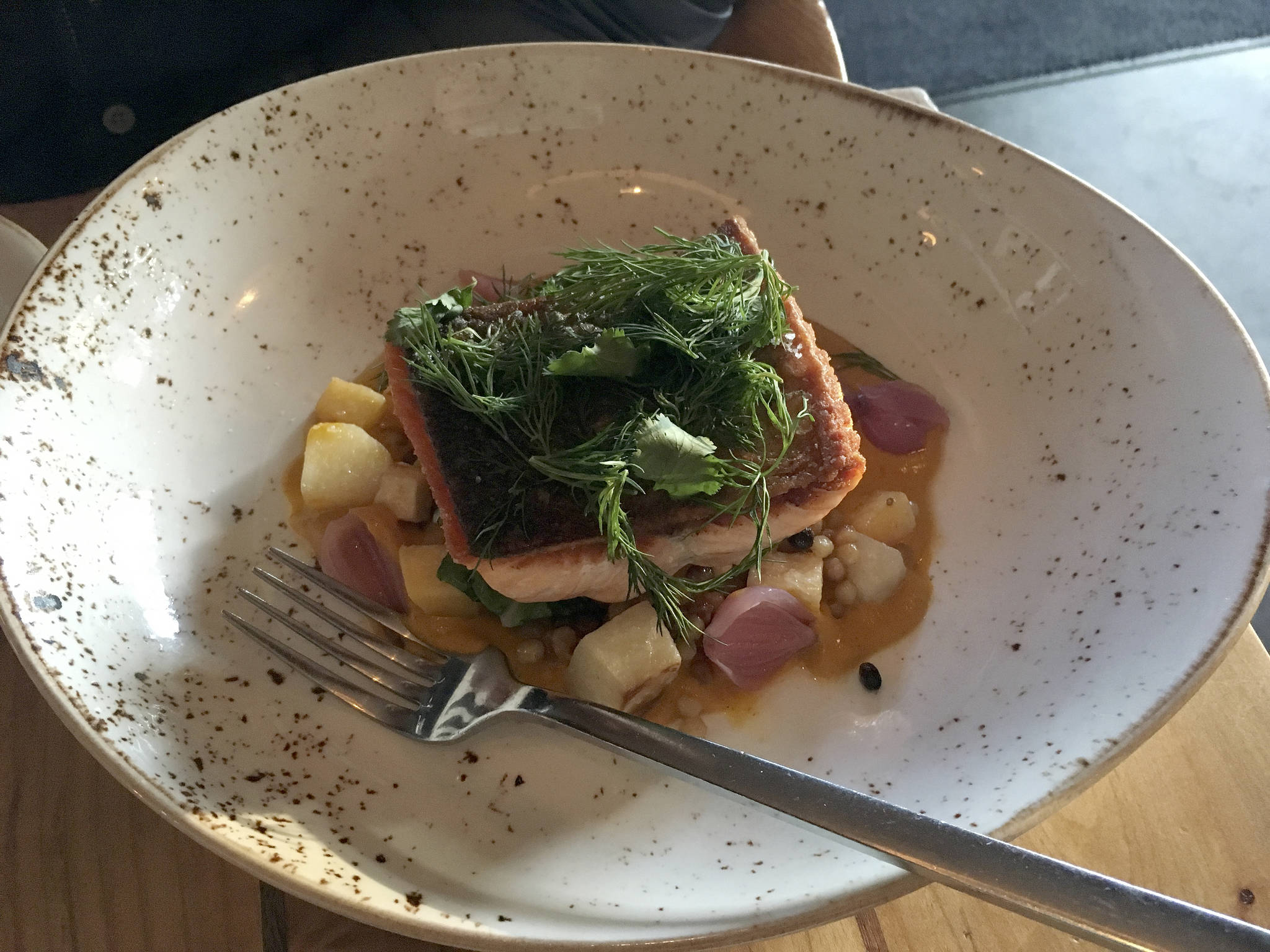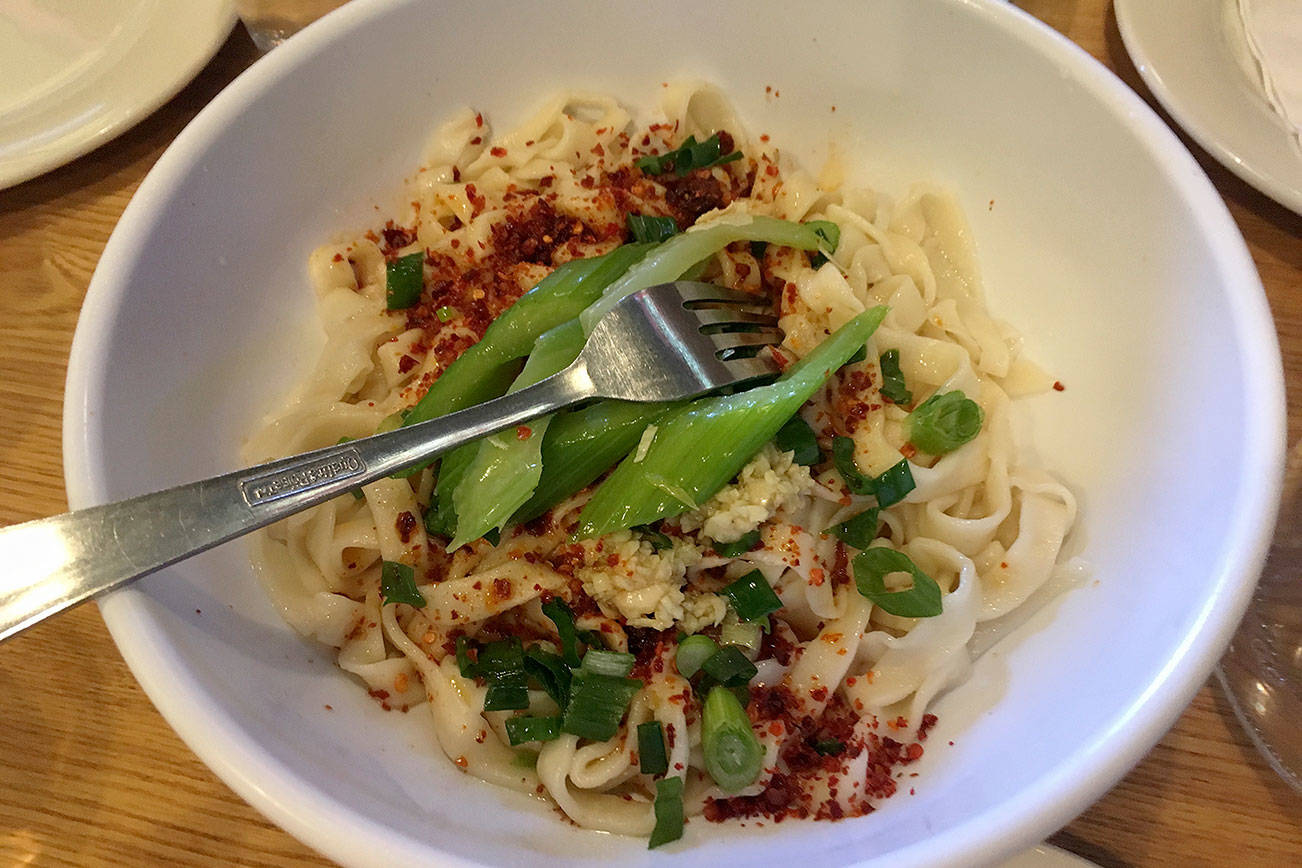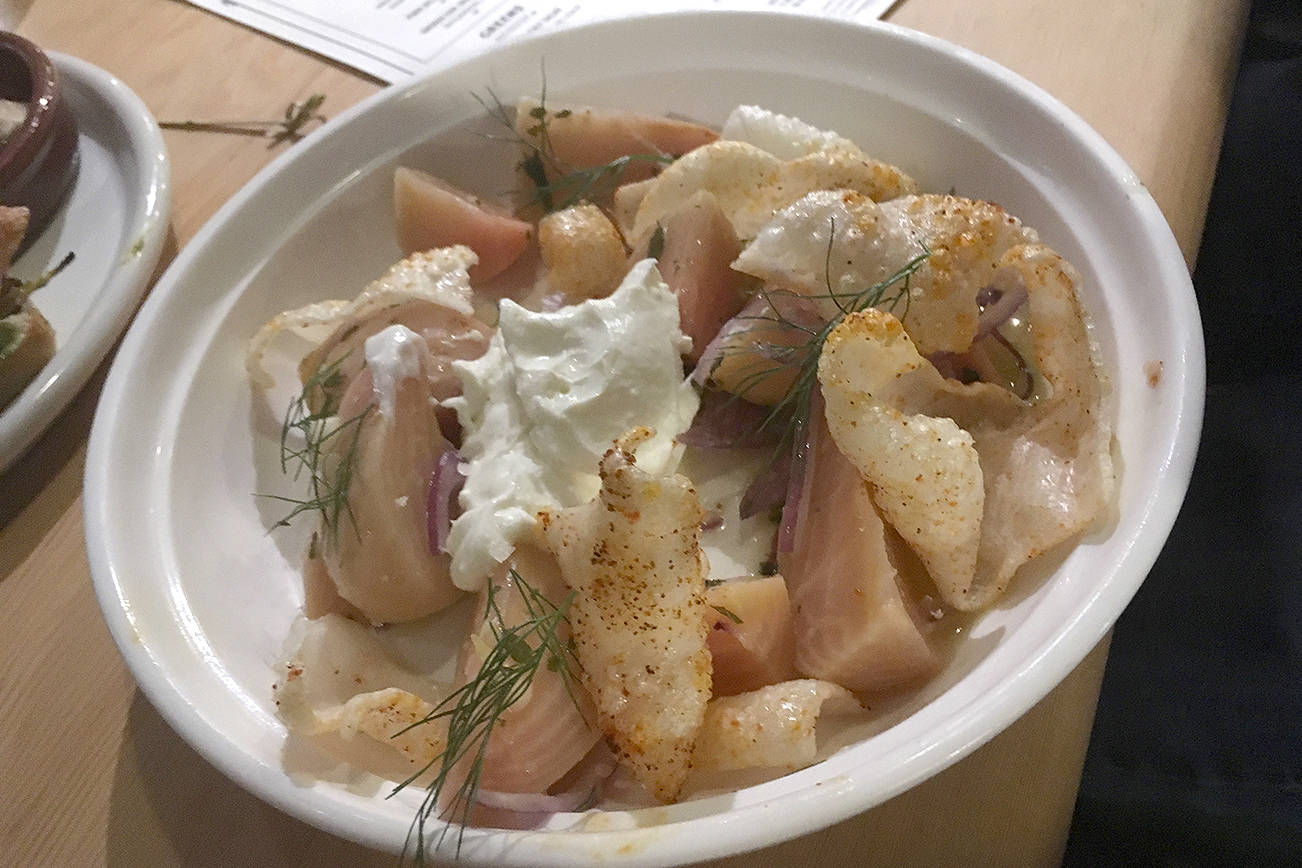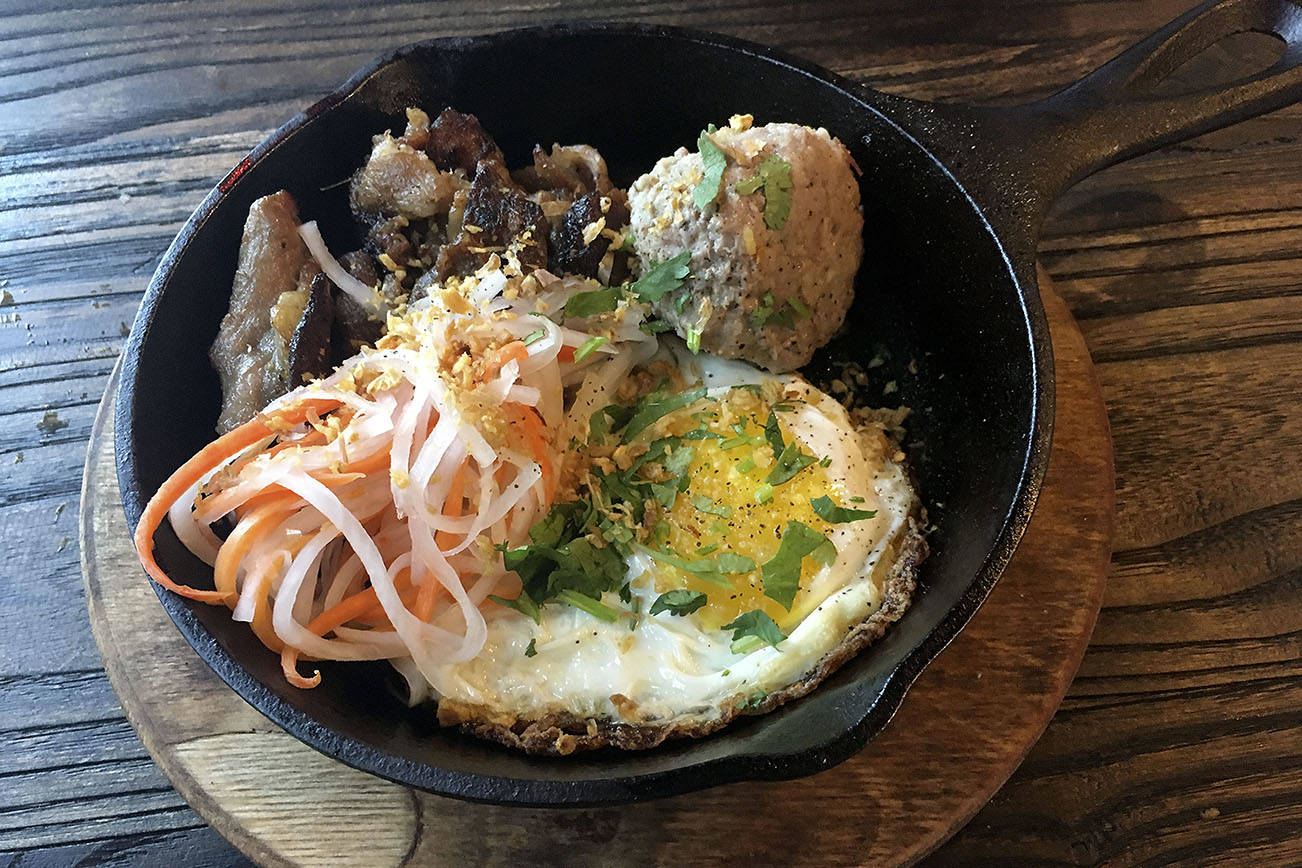As much as I love the food and the sleek interior of Mamnoon on Capitol Hill, the latest outpost from that restaurant’s owners offers something the mother ship doesn’t: the opportunity to watch the magic happen, and an intimacy with the cooks and servers lacking at Mamnoon.
The kitchen at Mamnoon Street (2020 Sixth Ave., 327-9121) is larger than the seating area, and you can either grab one of a handful of tables, get the restaurant’s “Middle Eastern Street Food” to go at the outdoor window, or sit at the small bar or counter overlooking the kitchen. We chose the latter, and as our food was prepared, watched mesmerized as staff metered out a dozen perfectly shaped mounds of hummus into plastic containers, then carefully added a drizzle of oil, a smidge of parsley, and a dusting of spice—probably for a late meeting of Amazonians, who flood the Denny Triangle restaurant at lunch. Come happy hour, every day from 4 to 6 p.m., the modern but bare-bones space breathes again, and its formerly harried staffers slow down and mix vats of sauce (a friendly worker saw us eyeing the dressing for the fattoush salad and asked if we’d like to try some), check on the meats rotating on spits for the shawarmas, happily answer any questions about the phenomenal food, and maybe give the lowdown on what the owners have in the works—including, we were told, another full-scale version of Mamnoon coming to the area.
The menu is divided easily into mezze (appetizers), mana’eesh (flatbreads with various fillings), shawarma (roasted meat on pita), and sandwiches. You’ll see plenty of familiar choices under mezze, like hummus, baba ghanoush, and tabbouleh. But we opted for the red lentil soup; spiked with coriander oil and cilantro, it’s rich in a way I rarely associate with lentil soup, and has a lush mouthfeel. I followed it with two mana’eesh. The lahm bi ajine was the star of the show, albeit a show filled with hits. Miraculously squeezed inside a quarter-inch of space between two pieces of warm flatbread is ground lamb, pomegranate molasses, and herb salad. Each bite yields a surprise: Will the sweet molasses ooze out and maybe trickle down your chin, or will you gently bite into the perfectly seasoned lamb with just the right gamy note? Perhaps your taste buds will get a jolt of herbaceous pleasure from the forthright yet never overbearing blend of parsley, mint, and cilantro. It hardly matters, and you’ll swear each bite is better than the last until the whole thing is gone and you’re wondering how they crafted something so righteously good, so balanced and lacking nothing. While this was my favorite of the two, the za’atar, filled with the herb salad, olives, tomatoes, labneh (strained yogurt), and za’atar (a prominent Middle Eastern spice made of sumac, sesame seed, and dried herbs like marjoram, thyme, and oregano) is also a vibrant but skillfully moderated play of flavor, with a tangier profile. These, by the way, make a meal for one for just $7–$9.
While we waited for our chicken shawarma, I sipped my hayati, a well-balanced cocktail of gin, apricot, lime, orange-blossom water, and jallab syrup (grape molasses, date, and rosewater) that utilizes Middle Eastern flavors expertly, and ordered one of my favorite side dishes from Mamnoon, which was listed on the daily-special menu on my visit: the fried cauliflower with tarrator and parsley. The cauliflower is deep-fried to a dark golden brown yet still retains the taste of the vegetable, and is slathered with the tahini-based tarrator. We tried another special as well, a Lebanese dish called mek’anek: two clove sausages, their dark color offset by a fuchsia-colored purée of pickled turnip, all of it enhanced by a garnish of parsley, pine nuts, and urfa bieber (a ground purplish-black Turkish chili pepper with a fruity finish). A lot of restaurants are playing around with pickled vegetables these days, but Mamnoon Street manages to bring the acidity without making the veggie indistinguishable, even the mild turnip.
When the shawarma arrived, after so many remarkable dishes, I admit I was a little disappointed. Because they don’t obliterate it with tahini-yogurt sauce as so many Middle Eastern places do, the chicken’s dryness was a little off-putting, unless you got a bite that included a pickled turnip or a soft French fry. Halfway through the large sandwich, though, we turned to our neighbors and saw them adding a sauce to theirs. It was a spicy red-pepper concoction (dense like a dip) and we asked for it to go, along with the second half of the sandwich. The next day, for lunch, I spooned some on, and all was well in the world again. It was just what the sandwich needed, without turning it into the typical saucy mess we’ve come to expect from shawarma.
Bottom line: Don’t let the Amazonians claim this gem as their own. Though I wouldn’t recommend coming at lunch, pop in anytime after 4 p.m. and experience one of our city’s best restaurants for far less money than you’ll spend at the original location—and, finally, get a real feel for the making of Middle Eastern cuisine.
